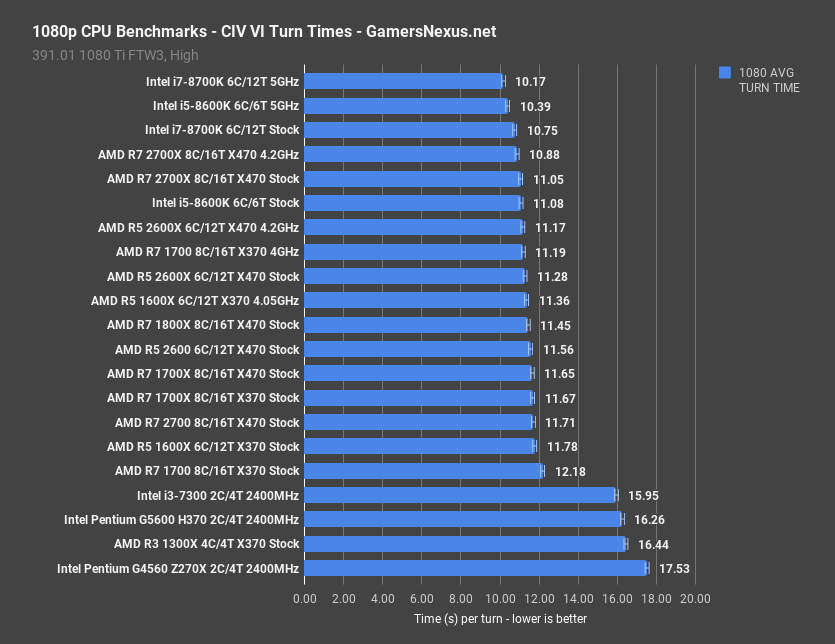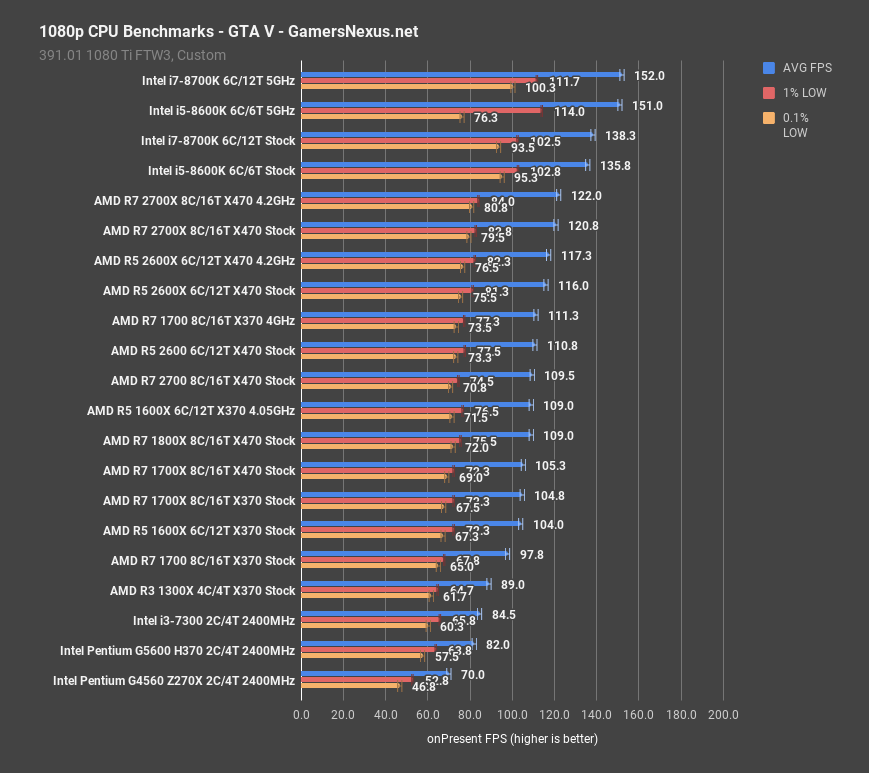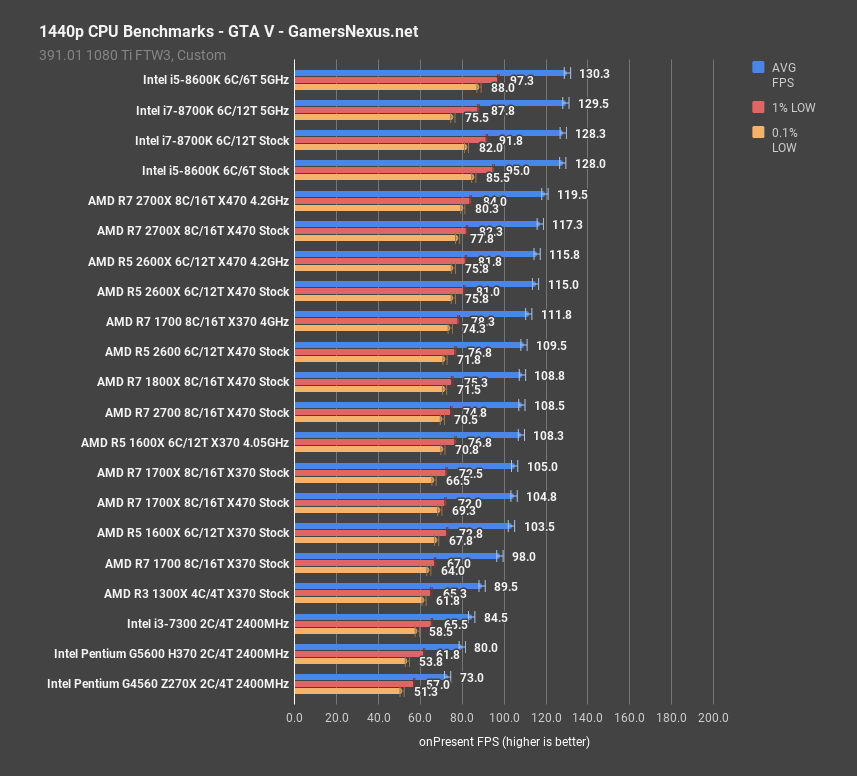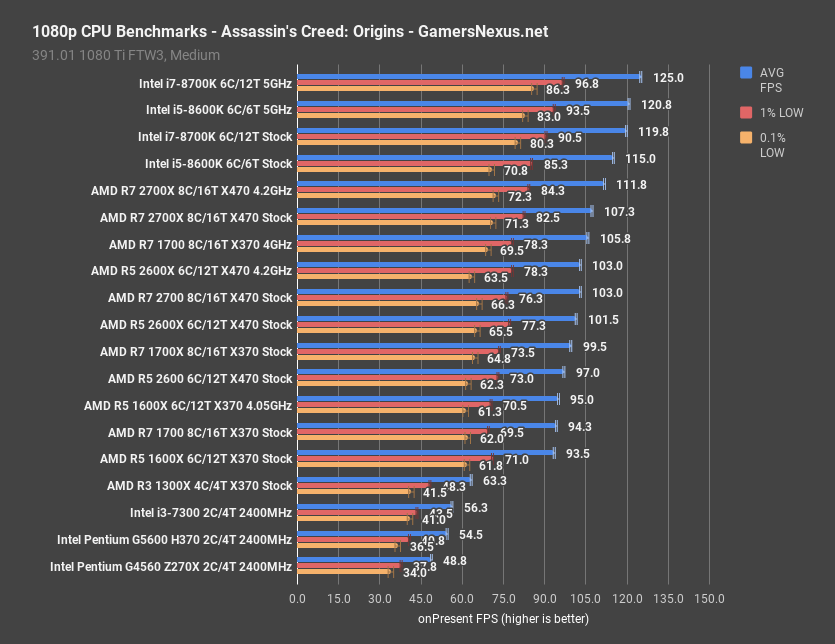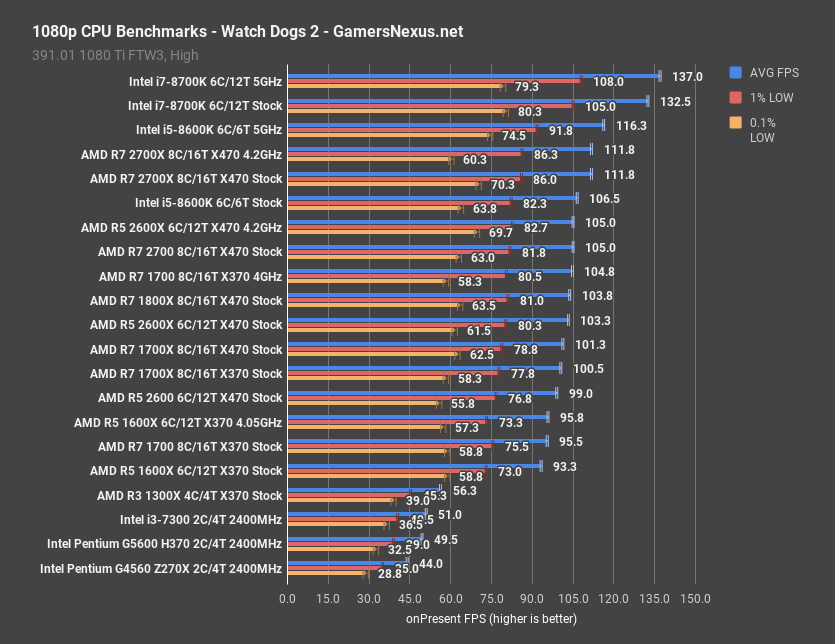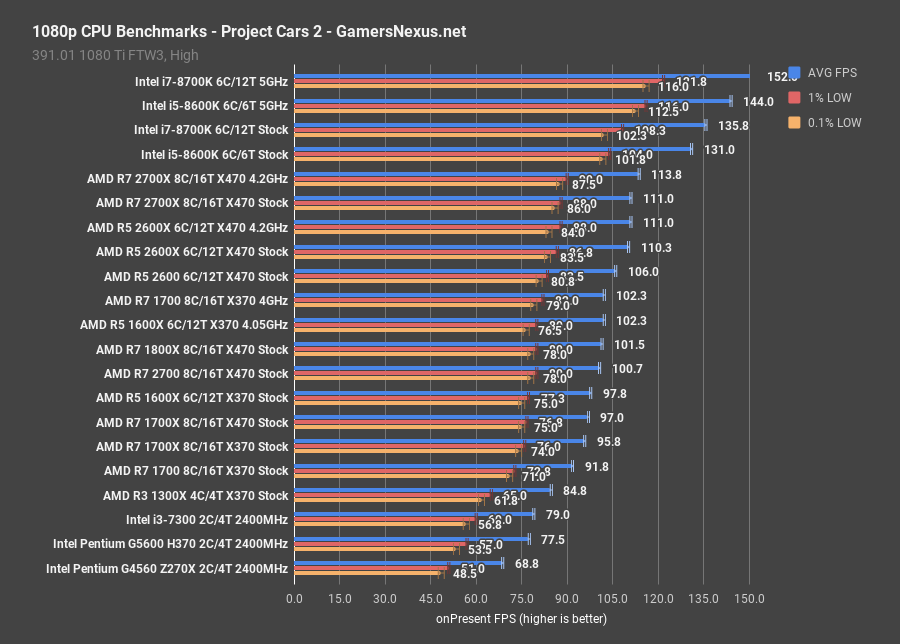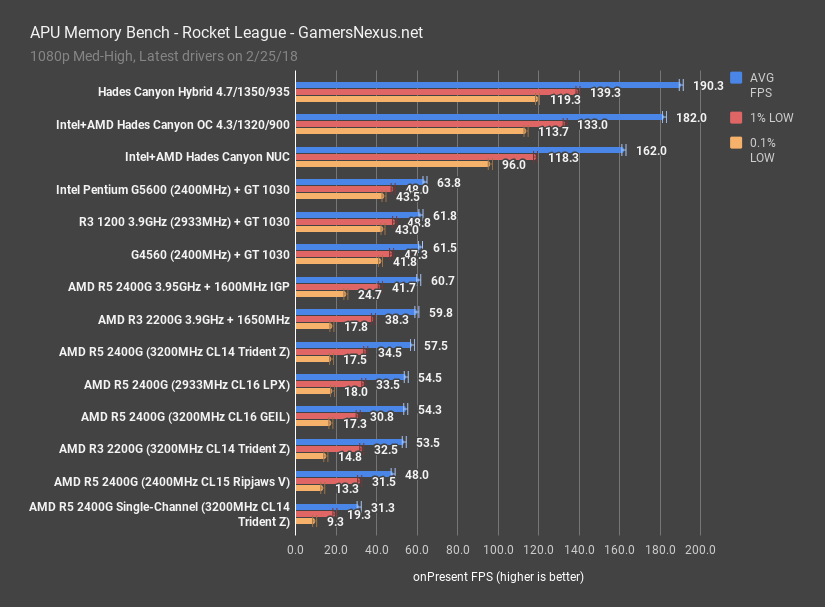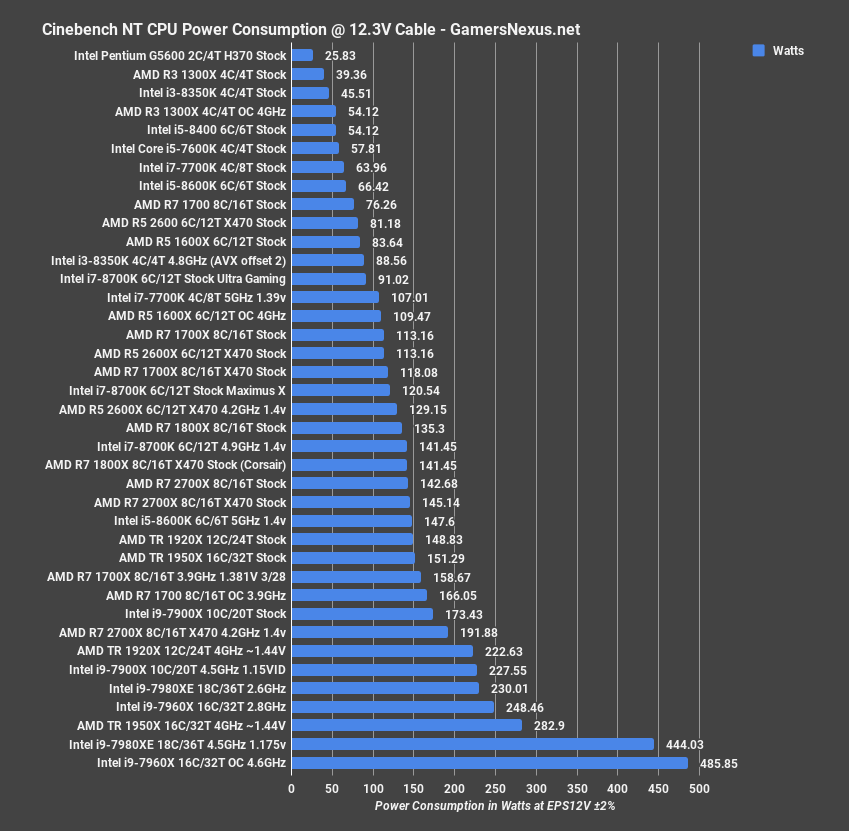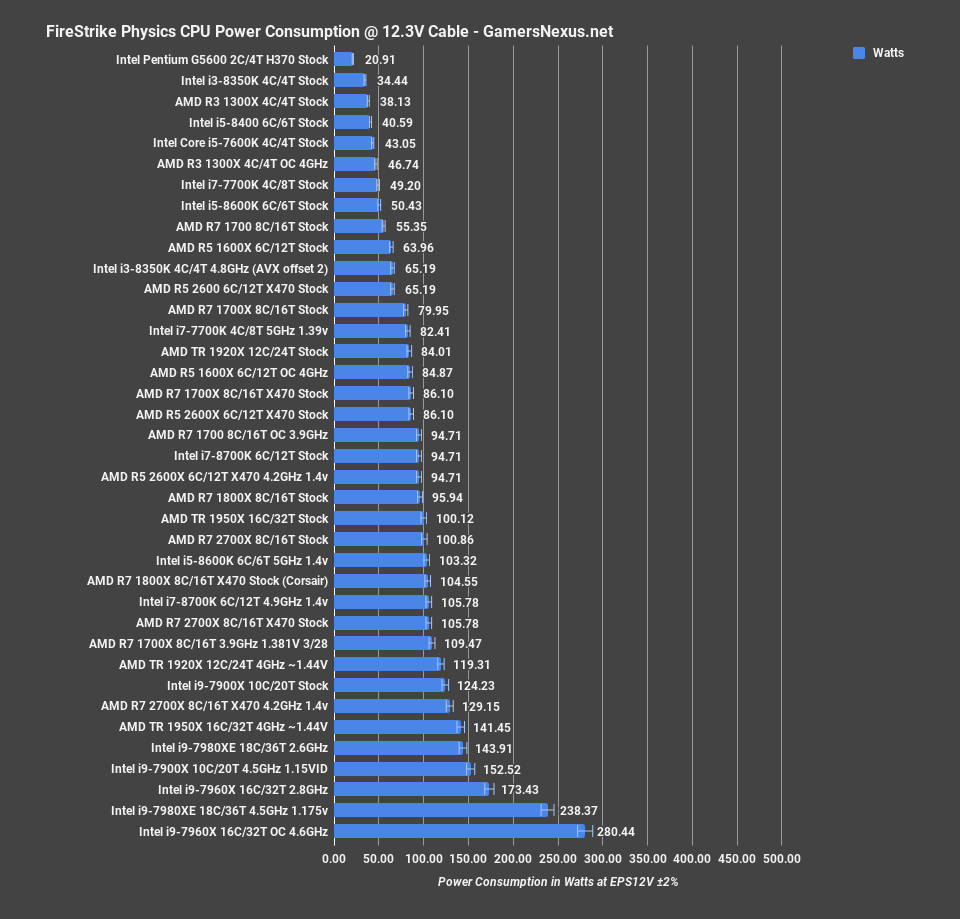Intel’s Pentium G line has largely managed to hold-on as one of the better buys of the past few years. There was a brief period where the G3258 made a lot of sense for ultra budget-minded buyers, then the G4560 recently – particularly at the actually good price of $60 – and now Intel has its Pentium G 5000 series. The G4560 had stunted growth from limited stock and steep hikes on MSRP, forcing people to consider i3s instead, up until R3s shipped. The 4560 remained a good buy as it dropped towards $60, fully capable of gaming on the cheap, but it is now being replaced by the units we’re reviewing this month.
We’re starting with the Intel Pentium G5600, which is the most expensive of the new Pentium Gold line. At $95, it’s about $40 more than the G4560, $10 more than the G5500, and $20 more than the G5400. The R3 1300X is about $105, and the R3 1200 is about $95.
For the G5600, we’re looking at a dual-core/quad-thread CPU at 3.9GHz, no boost, and with 4MB of L3 cache. Maximum memory support officially is 2400MHz, and using an appropriate motherboard would further limit that. These CPUs make the most sense to pair with non-Z-series motherboards.
The G5500 is mostly the same thing, except 100MHz slower. The G5400 is 200MHz slower, at 3.7GHz, with maximum graphics frequency also slowed-down by about 95MHz.
Because most users would pair these CPUs with H-series platforms, or otherwise non-Z platforms, we are testing the G5600 with 2400MHz memory. It just doesn’t make sense to test on a Z-series platform with faster memory. It’s unrealistic enough to be irrelevant.
GN CPU Test Bench (Sponsored by Corsair)
Part | Component | Price |
CPU | This is what we’re testing! | $100, $170 |
Motherboard | Gigabyte Gaming K5 for APUs | - |
Power Supply | TBD | |
Memory | Corsair Vengeance LPX 2933MHz | Varies |
GPU | GTX 1080 Ti FTW3 | $800 |
Cooler | NZXT Kraken X62 | $150
|
Civilization VI – G5600 vs. R3 1300X
We’re starting with Civilization VI turn-time benchmarks first, as it’s a unique metric that reflects specifically on CPU performance. We run a benchmark that has five turns until our next turn, and for the G5600, each turn averages 16.3 seconds on the G5600 CPU with 2400MHz memory. That’s among the worst three numbers we’ve seen since Civilization’s update, which means that you’re looking at about 1 minute and 20 seconds between your turns. For perspective, the fastest performer, the overclocked 8700K, sees turn time drop to about 51 seconds when multiplied by 5 turns.
Compared more reasonably to its predecessor Pentium G4560 with 2400MHz memory, the G5600 operates at a time reduction of 7.2%. The G5600 also operated at rough equivalence with our R3 1300X stock CPU; overclocking it would place it ahead of the G5600. The i3-7300 operated just slightly faster at 15.9 to 16 seconds, and would be similar to the 8300 that we haven’t yet retested.
GTA V – G5600 vs. R3 1300X
GTA V isn’t particularly friendly to the Pentium CPUs, although is still plenty playable. We’re clearly running into GPU bottlenecking at this point, operating at 82FPS AVG with the G5600 versus a maximum possible 152FPS AVG with our GPU-bottlenecked 8700K and 8600K 5GHz results. The G5600 still manages to outperform the G4560 by 17%, a remarkable uplift, and is roughly matched with the i3-7300 in AVG, 1%, and 0.1% lows. The R3 1300X operates 8.5% faster in average FPS, with no meaningful difference in frametime performance. That’s about 1% per dollar extra spent on the 1300X – not a bad uplift if considering the Ryzen alternative.
At 1440p, it’s about the same results. The only thing that changes is the top-end performance, because we’ve been completely bottlenecked on the CPU, and remain bottlenecked even under more intensive GPU scenarios of 1440p. The G5600 remains at around 80FPS AVG.
Assassin’s Creed: Origins – G5600 vs. R3 1300X
Assassin’s Creed: Origins is an intensive game for these CPUs to sustain, and we finally get some values dipping below 60FPS AVG. We’re down to 55FPS AVG for the G5600, outpacing the G4560 by 11.7%, with the 7300 ahead by 3%. The R3 1300X gains in a big way, outperforming the G5600 by 16% in AVG FPS, and outperforming it significantly in 1% low frametime performance.
Performance is similar at 1440p, as shown here. We have some differences that are within variance, but that’s about it. Let’s move to Watch Dogs 2.
Watch Dogs 2 – G5600 vs. R3 1300X
Watch Dogs 2 at 1080p has us at 50FPS AVG, with lows reasonably behind at 39FPS and 33FPS 0.1% low. The G5600 runs about 13% faster than the G4560’s 44FPS AVG, again a somewhat remarkable gain. The 7300 is at rough equivalence with the 5600, and the R3 1300X pulls ahead by 14% with its 56FPS AVG. Lows aren’t improved meaningfully with the Ryzen CPU, but the average FPS certainly improves significantly – and that’s for about a $10 to $15 price bump.
As expected, 1440p results post the same values for the low-end. Nothing changes in the stock here. We’ll just skip along to the next chart.
Ashes of the Singularity (Dx12) – G5600 vs. R3 1300X
Ashes of the Benchmark is next, and remains one of the most thread-intensive games – put air quotes around that – that we test. This is treated as a synthetic test. The G5600 at 1080p pushed 21FPS AVG, marking it a bit ahead of the G4560 and a bit behind the 7300. The R3 1300X operated a 23.6FPS AVG, for a lead of about 10%.
Project Cars 2 – G5600 vs. R3 1300X Gaming Benchmarks
Project Cars should favor the Pentium CPUs a bit more than Ashes. For this game, the G5600 lands at 78FPS AVG and plays reasonably well. It’s doing fine. The 7300 outperforms it by about 2%, and the G4560’s 69FPS AVG is outperformed by the G5600 by 13%. Although not appreciable, the G5600 also does better lows than the G4560.
The R3 1300X manages 85FPS AVG, with lows also advantaged, but again not particularly user-appreciable. The lead is about 9% for the R3 in this one.
Low-End GPU + Cheap CPU Benchmarks (GT 1030)
Finally, for low-end games, we’re mostly comparing versus the likes of the AMD APUs when using a GT 1030 for the Pentium processors. This puts pricing as similar to the R5 2400G, or close enough to it to be comparative.
With a GT 1030, the G5600 plays Rocket League at high settings and 1080p with an AVG FPS of 64, where we’re becoming bound by the hardware. The result ties us with the G4560, roughly, the overclocked R3 1200, and the APUs.
DOTA2 shows similar CPU limitations: The G5600 leads everyone else, even the overclocked R3, but that’s partly because DOTA2 shows strong favor toward Intel. It’s frequency and IPC-intensive.
Power Consumption – G5600 CPU
Finally, for some perspective, it’s only fair that we look at power consumption numbers. These are taken as measured at the EPS12V rails. For Cinebench multi-threaded, the G5600 is the lowest power-consumption device we’ve tested lately. It’s operating at about 26W on the H370 motherboard, with the next lowest device at 40W for the R3 1300X stock CPU. The i3-8350K stock CPU operated at 46W.
Single-threaded power consumption is up against the limitations of our test resolution, at about 15W for the G5600 single-threaded.
3DMark Physics testing is our gaming stand-in, and shows a 21W consumption at the EPS12V rails. That’s significantly lower than the 38W 1300X and the 34W 8350K. Given the average difference in gaming performance, it seems fair that the G5600 operates behind the 1300X when we see these power consumption metrics.
Conclusion: Intel G5600 vs. R3 1200, 1300X, & G4560
Intel’s Pentium G5600 competes most directly with the AMD R3 1300X or 1200, and indirectly versus the AMD R3 2200G (or R5 2400G APUs).
At $40 more than the G4560, it makes sense that the gains we’re seeing are as big as they are in some instances. That said, we’re also getting close to the R3 1300X without an overclock, and that’s just a few dollars more. The G5600 improves over the G4560 in big ways, but with the perspective of Ryzen and nearby i3s, it’s just an odd product to justify. We think that the cheaper models, the G5400 at $73 and the G5500 at $85, are potentially better buys than the G5600, which borders too close to i3 and R3 territory to really seem worth it. We’ll test those other Pentium CPUs shortly and let you know how they do.
Editorial, Testing: Steve Burke
Testing: Patrick Lathan
Video: Andrew Coleman
